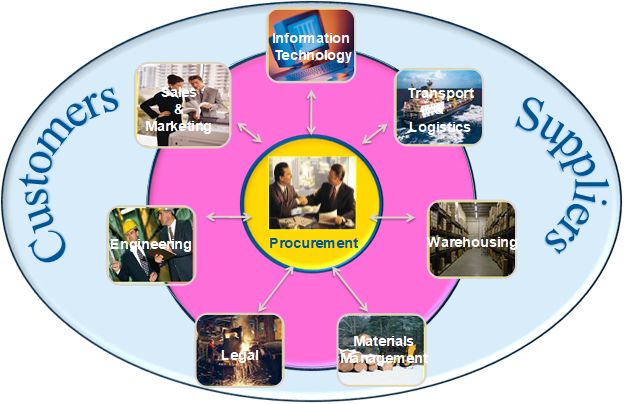Supply Chains are complex webs of various internal and external functions and people that need to work together to bring goods and services to their customers in an efficient manner. When placed at the center of the Supply Chain, Procurement’s role is to orchestrate the interactions and collaboration with all the Supply Chain partners. 
While the physical flow of materials may be important, the flow of information is even more critical. We have a tendency to blame our suppliers when we have stock outs or capacity issues, but the truth is that most of the issues are usually caused by communication failures within our own four walls. An article in Forbes “Supply Chain Capacity Planning: How Communication Rifts Lead to Inefficiencies” highlights these issues. Even though this article is written by a software company that is trying to sell their product, the observations they make are right on point. Outdated processes (or no structured processes at all) are at the heart of the issues.
If you have ever played “The Beer Game” – the famous Supply Chain simulation, you have seen first- hand that communication gaps are what cause the greatest problems. According to the article, “one false signal sent upstream can easily result in incorrect material or resource allocations throughout the entirety of manufacturing and distribution. Mismatched capacity during surges makes it near impossible to meet demand. Miscalculated slumps, however, can be just as problematic. Stockpiles build up, and products are left to sit until they expire, become irrelevant or must be discounted to move them out the door. In such cases, working capital is either locked up in wrong-sized inventories or obliterated, leading to lower profitability and earnings per share.” Organizational silos and communication breakdowns between Supply Chain partner teams complicate matters. “Materials movement and resource forecasts drive capacity planning, while capacity planning drives sales forecasts, which drives demand planning, and so on. Even if these teams were working off correct information (which isn’t usually the case), mistrust in each team’s estimates leads to overcompensation or under-compensation, further exacerbating false signals and leading to greater inefficiencies.”
Here are a few strategies offered to fill communication gaps:
- Organizational Transparency. This seems easy, right. It’s something we can control within our own organization? But siloed information is the norm in most organizations and the larger the organization, the more siloes there are. These silos create an “us vs. them” mentality. Opening the lines of communication and aligning KPIs across groups will go a long way to increasing organizational transparency and accelerating the flow of information.
- Integrate the “Right” Data Sources. The article recommends AI as a potential solution. To keep it simple, you need to identify what the “right” data is and then provide easy access to it across the Supply Chain. As I mentioned earlier, information flow can either make or break your Supply Chain.
- Test New Tools and Processes THEN Scale Up. Start with your processes. Throwing technology at a problem without examining the underlying processes is a fool’s errand. Using the AGILE method and introducing small pilot programs can be a great way to quickly learn what works or what doesn’t so you can adjust along the way. Once you have determined that your processes work, then scale up across the Supply Chain.
Procurement can and should play a critical role in orchestrating a company’s Supply Chain. Taking a step back and examining how information is flowing amongst the various Supply
Please stay safe, let us know what you think and join in the conversation . . . . .


